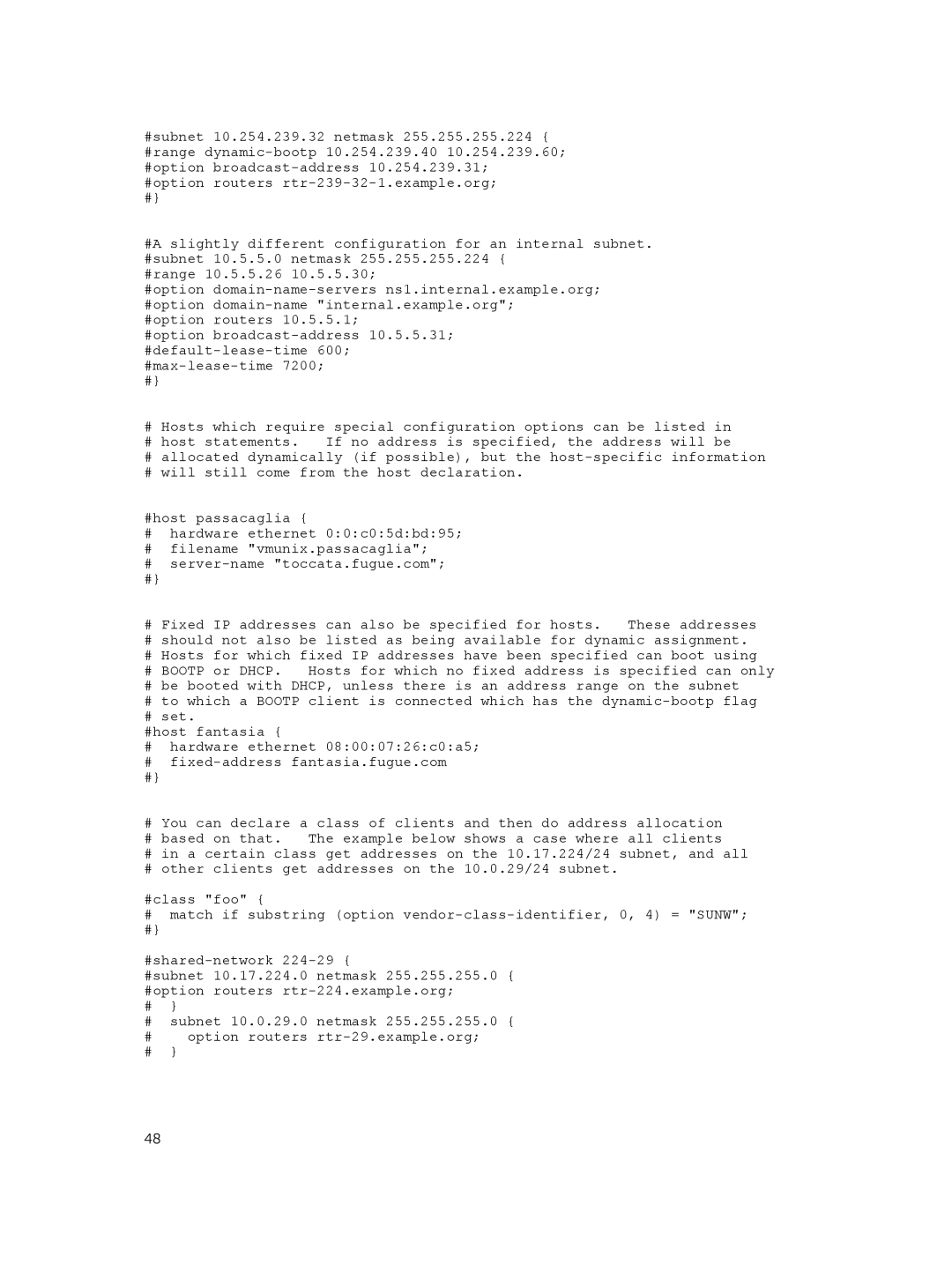#subnet 10.254.239.32 netmask 255.255.255.224 { #range
#}
#A slightly different configuration for an internal subnet. #subnet 10.5.5.0 netmask 255.255.255.224 {
#range 10.5.5.26 10.5.5.30;
#option
#option
#}
#Hosts which require special configuration options can be listed in
#host statements. If no address is specified, the address will be
#allocated dynamically (if possible), but the
#will still come from the host declaration.
#host passacaglia {
#hardware ethernet 0:0:c0:5d:bd:95;
#filename "vmunix.passacaglia";
#
#}
#Fixed IP addresses can also be specified for hosts. These addresses
#should not also be listed as being available for dynamic assignment.
#Hosts for which fixed IP addresses have been specified can boot using
#BOOTP or DHCP. Hosts for which no fixed address is specified can only
#be booted with DHCP, unless there is an address range on the subnet
#to which a BOOTP client is connected which has the
#set.
#host fantasia {
#hardware ethernet 08:00:07:26:c0:a5;
#
#}
#You can declare a class of clients and then do address allocation
#based on that. The example below shows a case where all clients
#in a certain class get addresses on the 10.17.224/24 subnet, and all
#other clients get addresses on the 10.0.29/24 subnet.
#class "foo" {
#match if substring (option
#}
#subnet 10.17.224.0 netmask 255.255.255.0 { #option routers
#}
#subnet 10.0.29.0 netmask 255.255.255.0 {
#option routers
#}
48
